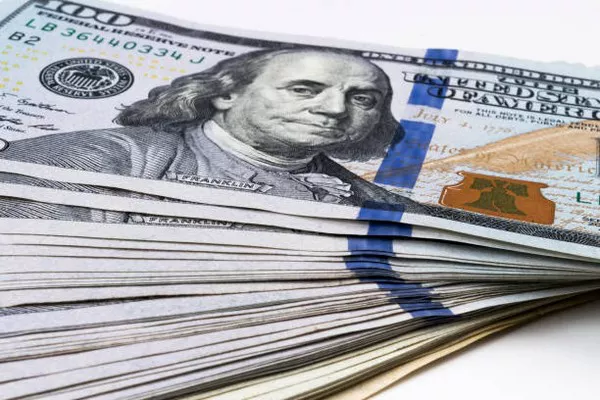The United States currency is a canvas that showcases the nation’s rich history, culture, and significant figures. Among the various denominations, the two-dollar bill stands out as a unique piece of American currency. Not only is it less commonly seen in circulation, but it also features distinctive portraits that spark curiosity and fascination. In this article, we will delve into the history of the two-dollar bill and the notable figures depicted on its face.
The Two-Dollar Bill: A Brief Overview
The two-dollar bill has a storied history dating back to the late 18th century. Its origins can be traced to the United States’ early days when the federal government faced the challenge of establishing a national currency. In 1862, the first two-dollar bill was introduced as part of the Legal Tender Act, which aimed to provide a uniform currency during the Civil War.
Throughout its existence, the two-dollar bill has undergone various design changes. However, the unique aspect of this denomination is not only its scarcity in circulation but also the portraits featured on its obverse (front) side. Over the years, two prominent figures have graced the face of the two-dollar bill – Thomas Jefferson and, more recently, a depiction of the signing of the Declaration of Independence.
Thomas Jefferson: Architect of Democracy
The most recognizable face on the two-dollar bill is that of Thomas Jefferson, the third President of the United States and one of the Founding Fathers. Jefferson’s presence on the two-dollar bill pays tribute to his immense contributions to the nation’s early development and his role in shaping American democracy.
Born in 1743, Thomas Jefferson was a polymath – a statesman, philosopher, architect, inventor, and author. His remarkable intellect and dedication to the principles of liberty and equality positioned him as a key figure in the drafting of the Declaration of Independence in 1776. Jefferson’s eloquent words in the document, asserting that all men are created equal and endowed with unalienable rights, have solidified his place in American history.
Jefferson’s presidency, from 1801 to 1809, marked a period of expansion for the young nation. One of his most significant achievements was the Louisiana Purchase in 1803, doubling the size of the United States and securing its place as a continental power.
The depiction of Thomas Jefferson on the two-dollar bill serves as a reminder of his enduring influence on American political thought and his pivotal role in the nation’s early years.
The Signing of the Declaration of Independence
In addition to featuring Thomas Jefferson, the two-dollar bill underwent another redesign in 1976 to commemorate the bicentennial anniversary of the United States. The new design, known as the Monticello back, replaced Jefferson’s portrait with a depiction of the signing of the Declaration of Independence.
The iconic image portrays the historic moment when the Founding Fathers gathered to sign the Declaration on July 4, 1776. It captures the essence of unity, purpose, and determination as the leaders of the thirteen colonies boldly declared their independence from British rule. The inclusion of this scene on the two-dollar bill pays homage to the foundational document that declared the principles of freedom and self-determination.
The individuals depicted in the scene include John Adams, Benjamin Franklin, Thomas Jefferson, Roger Sherman, and Robert R. Livingston, among others. The symbolic significance of this redesign goes beyond honoring a single individual, emphasizing the collective spirit that birthed the United States.
The Rarity of the Two-Dollar Bill
Despite the historical significance of the figures featured on the two-dollar bill, it remains an uncommon sight in everyday transactions. The reasons behind its scarcity are manifold, ranging from misconceptions about its value to superstitions surrounding its use.
Many people mistakenly believe that the two-dollar bill is no longer in circulation or is worth more than its face value. Consequently, some individuals choose to keep two-dollar bills as keepsakes rather than spending them, contributing to their relative scarcity in circulation.
Moreover, cultural superstitions surrounding the number two may have influenced the bill’s limited use. In some cultures, the number two is associated with bad luck, leading to the avoidance of two-dollar bills. As a result, these bills are often perceived as collectibles rather than a practical form of currency.
see also What Is The Fiat Dollar? A Comprehensive Overview
Conclusion
In conclusion, the two-dollar bill stands as a unique and historically rich piece of American currency. Whether featuring the portrait of Thomas Jefferson or the iconic scene of the signing of the Declaration of Independence, this denomination pays homage to the nation’s foundational principles and key figures.
Thomas Jefferson, with his profound contributions to American democracy, and the collective spirit represented in the signing of the Declaration of Independence, encapsulate the ideals that shaped the United States. While the two-dollar bill may be a rare sight in daily transactions, its historical significance and the faces adorning it make it a fascinating artifact that bridges the past and the present. As we handle this uncommon denomination, we are reminded of the enduring legacy of those who played pivotal roles in the nation’s early years.


